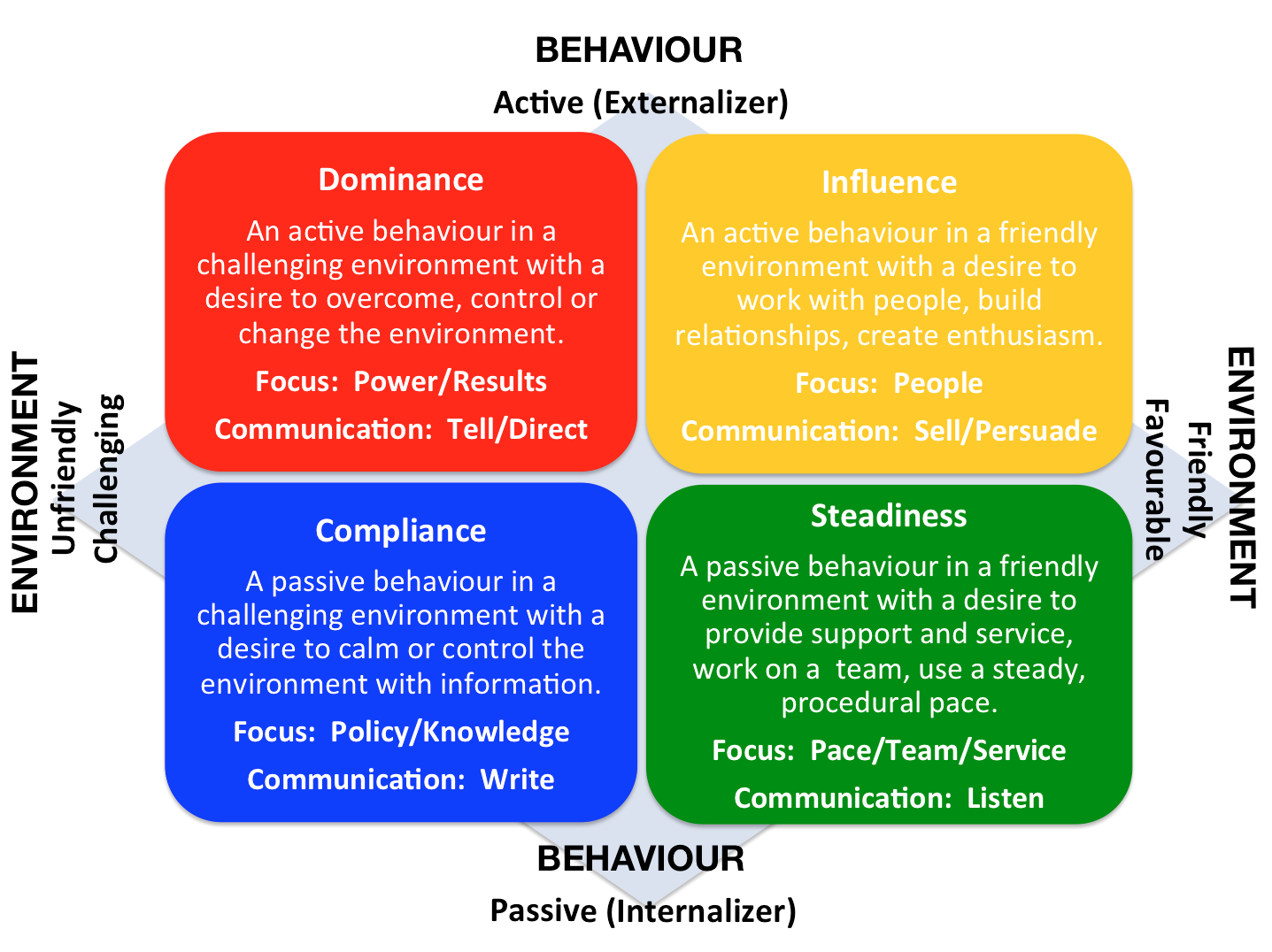DISC Behavioural Styles
There are four quadrants in the DISC model and each describes a particular way of behaving. Some people prefer one particular behaviour, while others prefer a blend of behaviours. The DISC Model looks at behaviour in terms of the following: Dominance, Influence, Steadiness and Compliance.

DISC Highs and Lows
We talk about the DISC behaviours being high or low. This does not mean good or bad as there is not a “right” or “wrong”. We all have preferences, however what is important is the appropriate behaviour in a given situation. If our natural DISC behaviour is not appropriate we can choose to modify our behaviour to suit the person we are dealing with, or the situation.
When the behaviour is high, it is a work strength, and will dominate the way we behave. When the behaviour is low, it is not as evident in our behaviour, and as an efficiency factor it will not be as dominant, but rather supports the high behaviours.
Dominance (D) is an active (externalized) behaviour in an unfriendly or challenging environment with a focus on results.
High D behaviour is driving, forceful, assertive, self-starting and competitive with a direct, “telling” communication style. The high D management style is quite direct and authoritarian. The high D motivator is likely to be results and the fear is failure.
Low D prefers to be consultative and cautious and will be careful when making decisions.
Influence (I) is an active behaviour in a friendly or favourable environment with a focus on people and building relationships.
High I behaviour is outgoing, persuasive, communicative, friendly with a “selling” and persuading communication style. The high I management style is people-focused and democratic. The high I motivator is likely to be recognition and the fear rejection.
Low I behaviour is logical, factual, serious, probing, with a preference for tasks, analysis and concepts over people interaction.
Steadiness (S) is a passive (internalized) behaviour in a friendly or favourable environment with a focus on pace (the natural rhythm we like to work at).
High S behaviour is steady, deliberate, determined, persistent, and thorough and focused on following through and concluding. The high S communication style is one of listening and the management style is experienced-based with a strong team focus. The high S motivator is likely to be security and team inclusion, and the fear being insecurity and team exclusion.
Low S behaviour is active, restless, and mobile with a fast initiating pace often enjoying juggling many tasks, but not always concluding.
Compliance (C) is a passive behaviour in an unfriendly or challenging environment with a focus on policy and information.
High C behaviour is accurate, precise, detailed, logical, and systematic with a preference for “writing” as the communication style or to have communication backed up in writing. The high C management style is based on knowledge and “know-how” and is rather specialist in approach. The high C motivator is likely to be information, and the fear conflict or chaos.
Low C behaviour is firm, independent, strong-willed, persistent and rather generalist versus specialist.
The PPA report reflects your current natural behavioural style in the work environment. It does not reflect your intelligence, education, past experiences or the way you are able to modify your behaviour. It is a tool to create a higher level of self-awareness.
Now that you have a little bit of background on what D, I, S, and C represent, start to notice the different styles in your own behaviour and that of others in your work environment.

Recent Comments